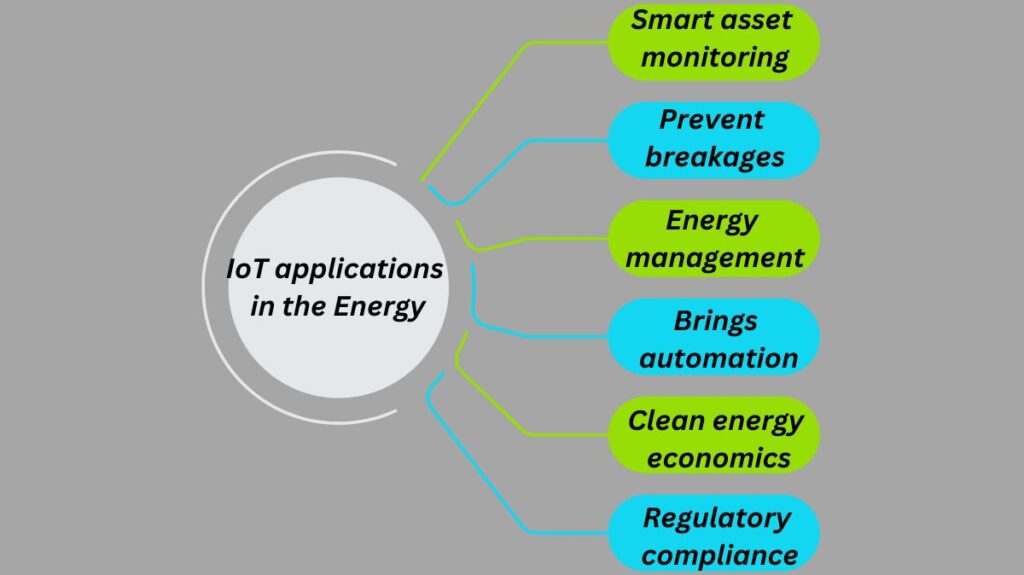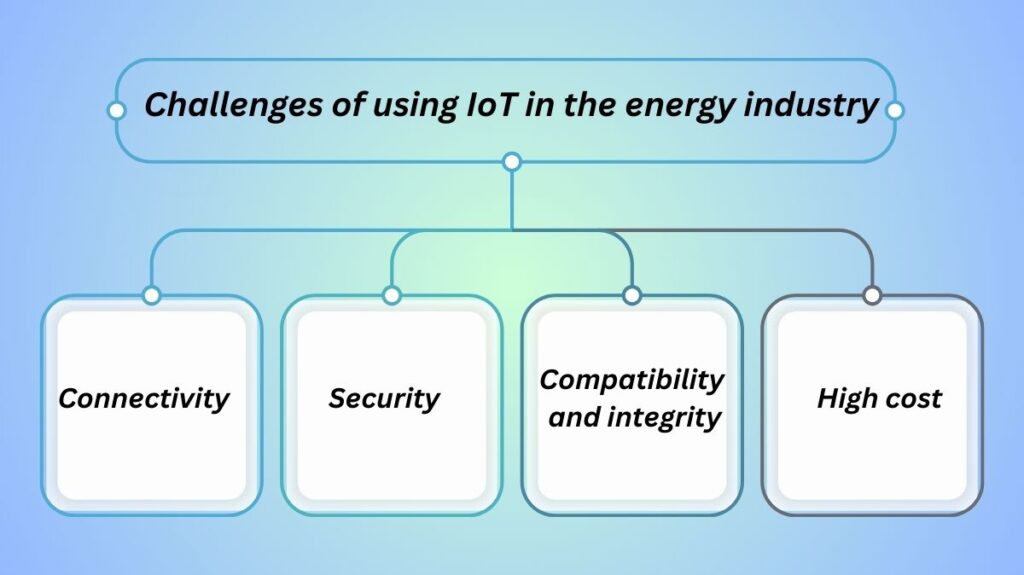IoT in energy applications

IoT energy projects accounted for 4% of all investments made in the industry in the second half of 2021; this percentage is expected to rise steadily. There are several ways in which providers might advance with the use of technology. Here are a few instances of how the energy market uses IoT:
Smart asset monitoring improves grid reliability
Real-time automatic equipment monitoring is made possible by IoT technology, which essentially eliminates human mistake. Equipment failures are so identified and fixed right away.
Duke Energy, a Florida-based power utility, developed a self-healing grid system that automatically reconfigures itself in the event of outages using Internet of Things technologies. According to the company, its system automatically identifies faults, isolates damaged line segments, and reroutes power when an issue occurs. Digital sensors on powerlines and at substations identify issues and relay them to the control system. Switches isolate the impacted area as soon as an issue is identified.
Helps prevent breakages
Intelligent IoT systems identify possible problems before they materialize, allowing operators to take preventative action before any damage occurs. This boosts production and lowers repair costs. Additionally, it assists providers in meeting delivery objectives and staying on schedule.
Chevron, a global energy company with headquarters in the US, is one example. Chevron uses IoT development for predictive maintenance to detect corrosion and pipeline damage. Sensors monitor the pH levels, the internal diameter and thickness of the pipe, and the concentration of gaseous and aqueous CO2/H2S throughout the pipeline. Real-time sensor data is retrieved and transmitted to the cloud platform for analysis, evaluation, and forecasting.
Enables advanced energy management
IoT can control energy demand and forecast power supply and consumption when combined with AI and machine learning (ML) algorithms. These insights can be used by businesses to create data-driven energy production and storage plans.
AI-powered platform that forecasts energy usage using satellite and weather data, statistical analysis, and numerical weather prediction models. These forecasts assist the system in storing sufficient solar energy, which it subsequently disperses on rainy days.
Brings automation to the next level
The energy sector is already heavily mechanized, but it may develop innovative automation solutions with the use of IoT and other computing technologies. For example, E.ON, a UK gas and electricity provider, uses IoT to manage even the most difficult-to-reach infrastructure, such wind farms in the Scottish Highlands.
Another example is Hive, a startup that developed an Internet of Things solution to remotely regulate heating, hot water, and electricity using a smartphone app in partnership with British Gas. This approach can provide piece of mind (and save you money, too) if you’ve ever been concerned that you forgot to turn off the iron before leaving the house.
Promotes clean energy economics
IoT makes sophisticated ideas that previously appeared unattainable a reality. For example, it facilitates the sale of solar energy from one home to another. The first peer-to-peer energy exchange was made possible by the TransActive Grid project, which used blockchain and IoT technology to construct a connected microgrid network. Blockchain and smart meters serve as the software and hardware levels in the experimental grid, respectively. In order to organize neighborly transactions and track electricity generation and consumption, smart meters link homes to blockchain-powered software.
Facilitates regulatory compliance
Organizations can adhere to current energy and environmental requirements by combining IoT with analytics technologies. Having sensors placed throughout your property allows you to remotely regulate facilities and make well-informed decisions or leave this task to an Al-powered energy program. Choosing assets that will be turned off during peak hours is one example. This could be very helpful for P272 and other compliance laws.
Challenges of using IoT in the energy industry

Not with standing the advantages of IoT for the energy industry, implementing and utilizing IoT technologies can present certain difficulties. To mention a few:
Connectivity
It is challenging to synchronize the thousands of IoT units and devices that comprise an enterprise-scale energy IoT platform because existing solutions mostly rely on centralized cloud services. In the meantime, connection will be a major concern over the next ten years due to the exponential growth of the global IoT network.
Security
Due to their widespread deployment and reliance on centralized cloud services, the majority of IoT-based energy systems are susceptible to hackers. Distributed control systems and blockchain might provide a solution to the problem.
Compatibility and integrity
IoT employs a range of technologies with various standards to link a single device to several devices. By creating universally accessible rules, information models, and protocols, such device inconsistencies can be resolved.
High cost
Investing in sophisticated software and sensors is only the beginning. Upgrading equipment is often the most costly aspect of utilizing IoT technology for many organizations.
The majority of these difficulties will undoubtedly be resolved soon. This will hasten the adoption of IoT and progress in the direction of a cleaner, safer, and more cost-effective energy sector.
Read more on IoT Applications: Revolutionizing Smart Technologies
Read more on IoT Applications in Smart Vehicles For Better Access, Safety
Read more on IoT Applications In Agriculture: Boosting Farm Productivity
Read more on Applications of IoT in Smart Home Expanding Safety & Quality
Read more on Top IoT applications In Healthcare For Better Efficiency
Read more on Applications Of IoT In Smart Cities For Better Living
Read more on IoT Applications in Retail: Smarter Stores & Supply Chains
Read more on Applications Of IoT In Education: Smart Schools & E-Learning
Read more on Applications Of IoT In Government: Security & Public Safety
Read more on What Is Consumer IoT And Consumer IoT Applications
Read more on Applications of IoT In Manufacturing And Key Benefits
